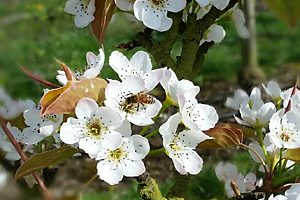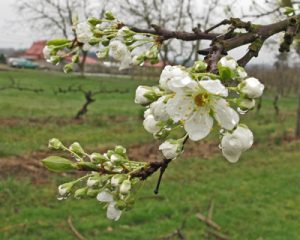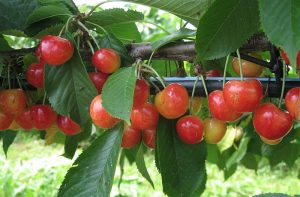At Cloud Mountain, we have a long history of growing fruit trees, first as a commercial orchard and nursery and now as an agricultural education center. But after many decades of experience, we can still be astonished at how different plants react to varied weather.
This was brought to mind last week by the ‘Plant of the Week’ post, on pears. For years we have grown pears and sold pear trees to gardeners. Our belief is that for most years, European and Asian pears do not have enough overlap to pollinize each other, but that all European pears work to pollinize other European pears, and that all Asian pears will overlap enough to pollinize each other. This year, however, we’re seeing some overlap between Asian and European bloom. And we’ve had several people tell us that some of their European pears are in bloom while others are not. For the bees to pollinize the trees, the trees have overlap in the bloom time. For some varieties, this weird blooms-out-of-sync could mean no fruit this year.
In my home orchard, I saw a similar issue with plums. My Early Laxton plum was in full bloom while my Imperial Epineuse plum was still showing no sign of blooming. They usually bloom together.
And apples are coming into bloom along with pie cherries, while the pears and some plums are still in bloom- a rare occurrence. What is going on? We believe that the record warm January, February and March are the reason behind the weird orchard bloom this year. We watched plants of all sorts break dormancy way before they usually do. The trees woke up, and then in late March and early April we’ve had “normal” weather, which slowed some plants down.
What does this mean for our orchards? If nights don’t get too cold (below 28F), we should be okay for most plants whose blooms are coinciding. The bees have to be extra busy as their blossom work is certainly more intense with everything blooming at once. We are forecast to return to mild, warm weather later next week, so hopefully the bees can get to all the trees they need to before the bloom finishes.
If the spring and summer continue to be warm, look for early ripening on many fruits- a fine thing to anticipate.




